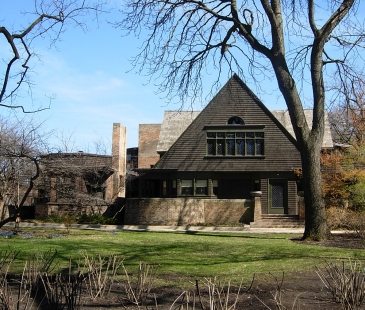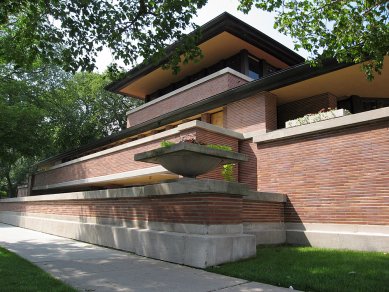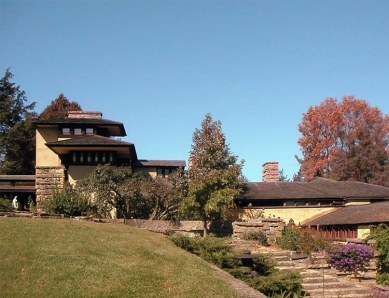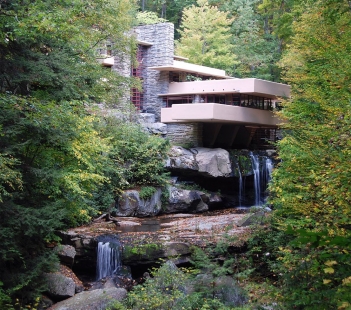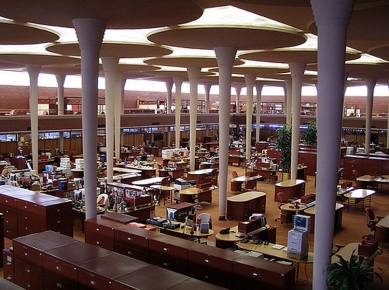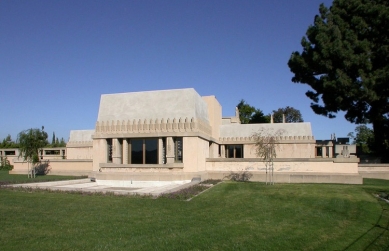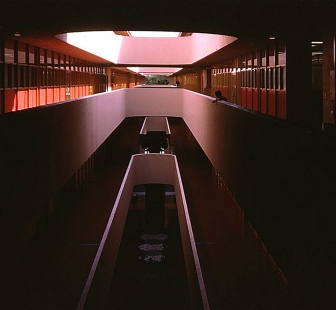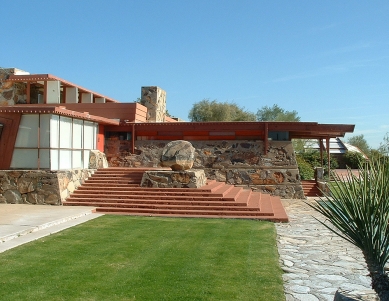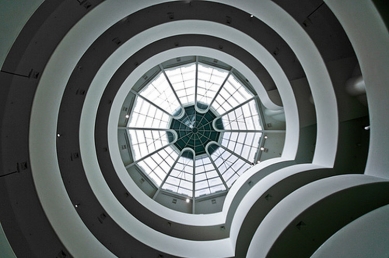
Frank Lloyd Wright loved nature and open spaces
Phoenix (USA) - One of his realizations would be enough, such as the famous Fallingwater or the Guggenheim Museum in New York, for its author to become immortal. However, American architect Frank Lloyd Wright has dozens of them to his name and is rightly considered one of the greatest architects of the 20th century. Wright, who was born in 1867, actively designed for 70 years and became a symbol of modern architecture. On April 9, half a century will pass since his death.
Wright was a pioneer of so-called organic architecture. In his designs, he used the most fundamental architectural principles (simplicity, unity, harmony) to ensure that buildings served their users as much as possible. He is characterized by the open connection of interior spaces, which he applied and continually refined in his concept of the "prairie" house. At the turn of the 19th and 20th centuries, during the waning period of Art Nouveau, he was one of the first to begin designing family homes made of concrete. He also became the first American architect to significantly influence the European scene.
Wright's Robie House in Chicago is considered a key building of modern architecture, ranking alongside the Tugendhat Villa by Mies van der Rohe in Brno, the Steiner Villa by Adolf Loos in Vienna, and the Savoy Villa by Le Corbusier in Poissy. Wright designed the house for Frederick Robie when he was 41 years old, and it became the culmination of his continually developing concept of the prairie house. It is characterized by pronounced horizontal lines, flat roofs with wide overhangs, and a connection to the surrounding nature.
A close connection to nature is characteristic of Wright's buildings. The most famous is probably his Fallingwater, or "the house over the waterfall," which grows from a rock above a waterfall in Pennsylvania. The focal point of the building is a tower made of natural stone with several fireplaces, from which concrete terraces branch out, extending into the greenery.
Another valued Wright building belongs to his later works. The spirally curved barrier-free building for the Solomon Guggenheim collection in New York is considered by many to be on par with the exhibits it houses - works by Picasso, Chagall, Pollock, or Kandinsky. The Museum of Modern Art opened in 1959 and still feels very avant-garde. However, its author did not enjoy the fame, as he died six months before its completion.
Wright was born on June 8, 1867, in the town of Richland Center, Wisconsin. After a brief period of studies at the local university and episodes in various studios, he joined the team of Louis Sullivan, a leading figure of the Chicago School. He stayed with him until 1893, when he opened his own practice in Chicago. He primarily designed family villas, administrative buildings, and factories. His signature can be found on 433 completed buildings, while others remained only in plans, such as The Mile High Illinois Skyscraper, a one-and-a-half-kilometer-high skyscraper for 100,000 people.
Wright is also recognized as a theorist, urban planner, and designer. He influenced not only American and European architecture but also worked in Japan, which served as a source of inspiration for him. There, between 1916 and 1922, he realized the Imperial Hotel in Tokyo, where he combined tradition with modernity and designed everything, including tea and coffee services. The fact that the hotel was undamaged during the earthquake in 1923, unlike many other buildings, contributed to Wright's international renown.
In addition to Wright's work, his personal life also filled the pages of newspapers at the time. America was outraged when he left his wife Catherine and six children in 1909 and went to Europe with his mistress Mamah Cheney. In 1914, at his estate Taliesin, one of his employees murdered Cheney, her two children, and four other people before setting the estate on fire. Taliesin, which served as a residence, studio, school, and farm, had to be rebuilt several times by Wright (it later burned down again) and was even seized due to debts. In the following years, Wright married twice more and had another daughter.
Wright was a pioneer of so-called organic architecture. In his designs, he used the most fundamental architectural principles (simplicity, unity, harmony) to ensure that buildings served their users as much as possible. He is characterized by the open connection of interior spaces, which he applied and continually refined in his concept of the "prairie" house. At the turn of the 19th and 20th centuries, during the waning period of Art Nouveau, he was one of the first to begin designing family homes made of concrete. He also became the first American architect to significantly influence the European scene.
Wright's Robie House in Chicago is considered a key building of modern architecture, ranking alongside the Tugendhat Villa by Mies van der Rohe in Brno, the Steiner Villa by Adolf Loos in Vienna, and the Savoy Villa by Le Corbusier in Poissy. Wright designed the house for Frederick Robie when he was 41 years old, and it became the culmination of his continually developing concept of the prairie house. It is characterized by pronounced horizontal lines, flat roofs with wide overhangs, and a connection to the surrounding nature.
A close connection to nature is characteristic of Wright's buildings. The most famous is probably his Fallingwater, or "the house over the waterfall," which grows from a rock above a waterfall in Pennsylvania. The focal point of the building is a tower made of natural stone with several fireplaces, from which concrete terraces branch out, extending into the greenery.
Another valued Wright building belongs to his later works. The spirally curved barrier-free building for the Solomon Guggenheim collection in New York is considered by many to be on par with the exhibits it houses - works by Picasso, Chagall, Pollock, or Kandinsky. The Museum of Modern Art opened in 1959 and still feels very avant-garde. However, its author did not enjoy the fame, as he died six months before its completion.
Wright was born on June 8, 1867, in the town of Richland Center, Wisconsin. After a brief period of studies at the local university and episodes in various studios, he joined the team of Louis Sullivan, a leading figure of the Chicago School. He stayed with him until 1893, when he opened his own practice in Chicago. He primarily designed family villas, administrative buildings, and factories. His signature can be found on 433 completed buildings, while others remained only in plans, such as The Mile High Illinois Skyscraper, a one-and-a-half-kilometer-high skyscraper for 100,000 people.
Wright is also recognized as a theorist, urban planner, and designer. He influenced not only American and European architecture but also worked in Japan, which served as a source of inspiration for him. There, between 1916 and 1922, he realized the Imperial Hotel in Tokyo, where he combined tradition with modernity and designed everything, including tea and coffee services. The fact that the hotel was undamaged during the earthquake in 1923, unlike many other buildings, contributed to Wright's international renown.
In addition to Wright's work, his personal life also filled the pages of newspapers at the time. America was outraged when he left his wife Catherine and six children in 1909 and went to Europe with his mistress Mamah Cheney. In 1914, at his estate Taliesin, one of his employees murdered Cheney, her two children, and four other people before setting the estate on fire. Taliesin, which served as a residence, studio, school, and farm, had to be rebuilt several times by Wright (it later burned down again) and was even seized due to debts. In the following years, Wright married twice more and had another daughter.
The English translation is powered by AI tool. Switch to Czech to view the original text source.
